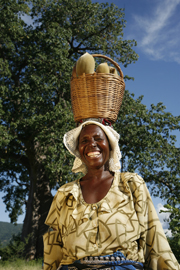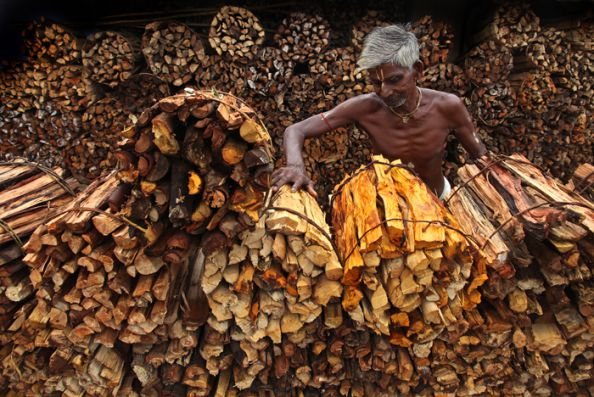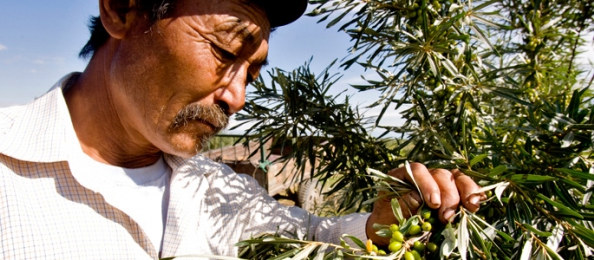Introduction to Voluntary Sustainability Standards
Private, voluntary sustainability standards are an innovative, market-based approach to promoting sustainable production and business practices. Adoption of these sustainability standards is intended to be voluntary: The standards are not created, run, or required by governments or government regulation. Instead, the system for voluntary sustainability standards are nongovernment initiatives that seek to drive sustainable production and consumption by creating a market demand for sustainable products, and a supply to meet that demand. They help buyers (both consumers and businesses) identify sustainably-produced products, and they guide producers, forest managers, mine and tourism operators, and factory owners and others in their choice of sustainable practices.
Voluntary sustainability standards have become important tools for moving production in some sectors toward sustainability. Some of the best known sustainability standards – for example Fairtrade International, the Forest Stewardship Council (FSC), and the Marine Stewardship Council – are now well-known brands in many countries, and consumers rely on associated “eco-labels” to inform their buying decisions. Attention by businesses to sustainable procurement has grown, increasing both the supply and demand for products produced in accordance with sustainability standards. A 2010 study of the market presence of voluntary sustainability standards found that, as of 2009, 18 percent of globally managed forests were certified to the FSC or PEFC (Programme for the Endorsement of Forest Certification Schemes) standards, 17 percent of the global coffee supply was produced in compliance with a sustainability standard, and sustainable bananas made up about 20 percent of global banana exports. Parallel to the growth in these sectors with long experience with certification, new systems for voluntary sustainability standard are emerging in sectors such as biotrade, mining, energy, water, and sports (e.g., Union for Ethical Biotrade, Responsible Jewellery Council, Initiative for Responsible Mining Assurance, Alliance for Responsible Mining, Roundtable for Sustainable Biomaterials, Golf Environment Organisation, Alliance for Water Stewardship, and more). New uses for voluntary sustainability standards are also emerging. Actors such as governments and financial institutions are now employing standards to help implement policy objectives and assess portfolio risk.
“Voluntary standards systems are a promising and rapidly evolving concept with considerable potential to promote a ‘green economy.’ They encompass the three pillars of sustainability – social, environmental, and economic aspects – and consequently they can be considered as a tool that makes sustainable development visible. Currently, VSS are becoming a significant element in international trade and in the promotion of sustainable development strategies, especially in the context of globalized markets and supply chains.”
Voluntary sustainability standards are an increasingly important market mechanism for driving sustainability, and the world of standards is rapidly innovating and evolving. We explain what private voluntary sustainability standards are and how they are structured. We briefly review the history of these standards and examine recent trends in the evolution of these systems. Then we examine concerns expressed about the credibility and effectiveness of sustainability standards and how the voluntary standards movement is addressing these concerns.
At the heart of any system for a sustainability standard is a standard that defines good social and environmental practices or performance in an industry or product. But a standard alone would not be sufficient to create a market for sustainable products. The market mechanism behind standards relies on four other important components of a system for standards: assurance, labels and claims, traceability, and capacity-building.

• Producers and other businesses seeking to meet a standard (e.g., farms, fisheries, forests, factories, or operations) are assessed to determine whether they meet the standard. This is done through the assurance system set up by the standard-setting organization. Assurance of compliance has traditionally been based on an independent, third-party audit leading to certification, though new approaches are emerging. The assurance system gives buyers confidence that they are buying sustainably produced products.
• Many standard-setting organizations offer corporate buyers of certified products the right to use a consumer-facing label or claim on product packaging (e.g., Fairtrade-certified coffee or the Rainforest Alliance green frog label on certified products). Others permit only business-to-business claims. Labels and claims are appealing to buyers and consumers, and thus help increase demand for products produced in accordance with the standard.
• Traceability systems trace the “chain of custody” of products – from where they were produced, to the full supply chain, and through to the final product – to provide proof of the origins of products carrying a label or a claim.
• Some standard-setting organizations provide capacity-building services to help producers, operators, or enterprises come into compliance with their standard. Others work with partner organizations that provide this training service. By combining these five elements (the standard, assurance, labels and claims, traceability, and capacity-building), systems for voluntary sustainability standards provide incentives for many different actors to support and implement more sustainable practices. Consumers rely on standards to identify products that were produced using practices they value and want to support. For businesses seeking to source sustainably, the standards provide assurance that they are in fact buying products produced using responsible practices. Together, consumers and purchasing businesses build a demand for sustainable production. For suppliers of this product, systems for standards offer guidance on how to improve production and meet sustainability goals and connect them to a market for sustainable products (which often provides higher prices than conventional markets).
Addressing concerns, defining credibility, and demonstrating effectiveness
Growth in the supply and demand for certified products, increasing diversity in standards and systems for sustainability standards, and the emergence of new actors and uses for standards are all signs that the world of voluntary sustainability standards is maturing. With this maturity comes also more attention and scrutiny of systems for standards in general and of individual systems. Both proponents and skeptics of standards have raised important concerns that the systems are working to address.
What are the major concerns that proponents and critics have raised about voluntary sustainable standards? And how are systems for standards seeking to address those concerns? Three broad areas of concern discussed are growth and markets, accessibility and exclusion, and impact and claims.
The first set of concerns relates to the market for sustainable products created by systems for voluntary sustainability standards. There is concern that these systems will not grow quickly enough – that they will not develop enough supply for the market, or conversely, not generate a rapid uptake in the market when certified supplies are available. Finding a balance between demand and supply is tricky. The oversupply of certified products that do not end up being sold with the relevant claim is referred to as leakage. Leakage reduces any margins or benefits from securing customers as a result of certification and can reduce the incentive of producers, factories, or other operations to seek to demonstrate compliance with a standard. Where there is not a sufficient supply of a certified product available, it can prevent larger customers from making commitments to sourcing from a particular standard because they might not think these commitments can be met. This, in turn, reduces the market demand for the products produced according to sustainability standards.
For this reason, anticipating market demands, developing a market, providing connections between buyers and suppliers, and ensuring that capacity-building and assurance services are available to help boost supply are important functions of those who own the standard. Some standard-setting organizations take on this challenge themselves with strong market-development departments and capacity-development areas, whereas others seek partnerships to address the issue. Regular discussions with potential buyers about their sourcing needs help systems for standards and their partners determine where to invest in building new supply. Partnerships with capacity-building organizations and donor institutions provide support to farmers, factories, and enterprises in target commodities and markets with helping to prepare for certification.
A related concern is that systems for voluntary standards are not well-suited to mainstream production; that they are appropriate only for select producers, operators, factories, and fisheries; and that they cannot reach the vast majority of entities with unsustainable practices. Not only does this threaten to limit the growth of sustainability standards, it also raises concerns about equal access to standards and the markets they create.
The accessibility of standards is of particular concern regarding smallholder farmers and fishers, manufacturers, and other operators in the developing world. The concerns about accessibility stem from both the costs of achieving compliance (needed investment) and demonstrating compliance (auditing processes). Improving practices in order to meet the sustainability standard can be seen as an investment in the future of the business. However, there are concerns that those who cannot afford to make the initial investment in improvement, or lack the know-how to do so, will be excluded. The cost of audits or verification to demonstrate compliance also creates a possible source of exclusion. When the assurance process includes a site visit, this is typically done at the cost of the entity being certified.

Although participation is voluntary, compliance with standards is a condition for some buyers. This means that an inability to make investments to come into compliance with voluntary sustainability standards or to cover the costs of compliance checks could exclude producers from certain markets. On the other hand, voluntary sustainability standards are actually, at their core, a mechanism to connect producers with new markets that might not have been accessible to them without the standards mechanism. Moreover, systems for voluntary standards and buyers of certified products can provide or facilitate the provision of capacity-building activities and credit to producers that do not otherwise have access to this assistance.
Systems for sustainability standards are addressing concerns about exclusion and accessibility in many different ways. Expanding capacity-building and facilitating finance for improvements is one approach. Another area of intervention is in the standard-setting process itself: including stakeholder groups in different countries and from different production models in the development of standards and revision processes, and seeking strategies to make global standards nationally relevant and applicable. The ongoing revision of the Sustainable Agriculture Network, for example, will include stakeholder workshops in 20 countries in Europe, the Americas, Africa, and Asia. New models of standards are also emerging to offer a less-demanding entry into a system for standards, and new models of assurance seek to reduce costs of the compliance-check process. At the same time, systems for standards are investing in building monitoring-and-evaluation systems, which will give them better information about the entities they are reaching with their standards, those who might be left out, and why. This type of business intelligence will help owners of standards improve the reach and inclusiveness of their systems.
The third set of concerns about voluntary sustainability standards relates to what they deliver and which claims are based on the use of standards. With more and more actors relying on standards to meet their own sustainability objectives, stakeholders and users of standards increasingly want to know whether standards really result in sustainability improvements and/or stop harmful practices. Expectations that standards should be able to reliably demonstrate that they are making a difference are growing. This demand to prove results is not unique to the standards world: Demands for data and evidence are growing in public policy and development work in general. It takes on a special importance for voluntary sustainability standards, however, because these systems are meant not only to deliver sustainability results but also assure buyers that their purchases are supporting sustainable production. In response to this concern, many systems have ramped-up efforts to evaluate their systems and collaborate with independent researchers to conduct independent research about their systems’ effectiveness and impacts. As described earlier, they are also building monitoring systems to track key performance indicators over time. Public access to studies and monitoring results is improving, as systems for standards are increasingly make findings available on their websites.
A related concern is “greenwashing.” Some critics worry that voluntary sustainability standards and/or their users are making false or exaggerated claims. These false claims could simply not be true (e.g., a claim that a process meets a standard when it does not), or claims could be vague or difficult to verify (e.g., a claim that the product is “natural”). False or exaggerated claims are seen with regard to all environmental and social issues and are not isolated to voluntary sustainability standards. In fact, the benefit of products, processes, or services making a claim about performance against a standard is that the claim can be independently verified, and the owner of the standard can take steps to prevent false claims about use of its system.
“‘Private’ highlights the nongovernmental nature of these systems. It does not mean that they are business-driven initiatives; often private voluntary standards are developed and managed by multistakeholder groups or even groups dominated by nongovernmental organizations.”
Sustainability standard systems seek to address the greenwashing concern with balanced multistakeholder standard-setting and governance. The FSC, for example, is governed by its members, who represent environmental NGOs, the timber trade, community forest groups, and forest certification organizations. Members are organized into three chambers – social, environmental, and economic – and each chamber is divided into North and South sub-chambers. Voting rules ensure balanced input from respective North and South chambers. Similarly, Fairtrade International has a board with representatives of producer networks, labeling initiatives, and certified traders.
Given these general concerns about sustainability standards and the large number of new systems coming onto the market, several actors in the standards landscape are developing tools to help users identify the individual systems that best meet their needs and address their primary sustainability and credibility concerns. The International Trade Centre has created a database (www.standardsmap.org) with detailed information about many systems for sustainability standards, and this database feeds tools for public procurement officers and for producers looking for standards that meet their needs. Ecolabelindex.com covers more ecolabels, but with fewer data fields. GoodGuide is a product-specific database, and Ekobai provides a central database of companies certified to one of the more than 400 different sustainability standards. Industry initiatives such as the Global Sustainable Compliance Program and organizations interested in using standards to achieve sustainability objectives are developing benchmarking tools to enable users to compare the content and processes of different standards against each other and/or against a benchmark.
ISEAL is a nongovernmental organization whose mission is to strengthen voluntary sustainability standards for the benefit of people and the environment. Its membership is open to all multistakeholder sustainability standards and accreditation bodies that demonstrate their ability to meet the ISEAL Codes of Good Practice and accompanying requirements, and commit to learning and improving. Through membership in ISEAL, systems for standards show a commitment to supporting a unified movement of sustainability standards. ISEAL also has a non-member subscriber category to engage with governments, researchers, consultants, private-sector organizations, nonprofit organizations, and other stakeholders with a demonstrable commitment to the ISEAL objectives. Read more about the ISEAL Alliance and its codes of good practice at www.isealalliance.org.
Kristin Komives Kristin is ISEAL's Director of Impacts I first joined ISEAL in 2010 to help set up a monitoring.
ISEAL represents the movement of credible and innovative sustainability standards. ISEAL's mission is to strengthen sustainability standards for the benefit of people and the environment.
Its membership is open to all multi-stakeholder sustainability standards and accreditation bodies that demonstrate their ability to meet the ISEAL Codes of Good Practice and accompanying requirements, and commit to learning and improving. Through membership in ISEAL, standards systems show a commitment to supporting a unified movement of sustainability standards. ISEAL also has a non-member, subscriber category to engage with governments, researchers, consultants, private sector organisations, non-profit organisations and other stakeholders with a demonstrable commitment to the ISEAL objectives.
The goals of ISEAL Alliance are to:
- Improve the impacts of standards
- Define credibility for sustainability standards
- Increase the uptake of credible sustainability standards
- Improve the effectiveness of standards, including driving innovations in standards
Source: ISEAL
About Us // Privacy Policy // Copyright Information // Legal Disclaimer // Contact
Copyright © 2012-2018 macondo publishing GmbH. All rights reserved.
The CSR Academy is an independent learning platform of the macondo publishing group.









